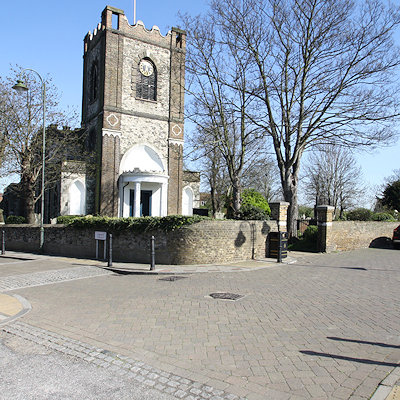
Like us on Facebook
PLACE NAMES


 
|
|
Dagenham
|

| |
Dagenham first appeared in a document (as Dæccanhaam) in a charter of Barking Abbey dating from 666 AD. The name almost certainly originated with a small farmstead, the "ham" or farm of a man called Dæcca, as Dæccan hamm.
In 1931 the Ford Motor Company relocated from Trafford Park in Manchester, to a plant in Dagenham, which was already the location of supplier Briggs Motor Bodies. A 500-acre riverside site was developed to become Europe's largest car plant, a vast vertically integrated site with its own blast furnaces and power station, importing iron ore and exporting finished vehicles. By the 1950s Ford had taken over Briggs at Dagenham and its other sites at Doncaster, Southampton, Croydon and Romford. At its peak the Dagenham plant had 4 million square feet of floor space and employed 40,000.
On 20 February 2002, full production was discontinued due to overcapacity in Europe and the relative difficulty of upgrading the 60-year-old site compared with other European sites such as Almussafes (Valencia, Spain) and Cologne. Other factors leading to the closure of the Auto-assembly line were the need of the site for the new Diesel Centre of Excellence, which produces half of Ford's Diesel Engines worldwide, and the UK employment laws when compared to Spanish, German and Belgian laws. In 2005 Cummins went into a joint venture and offered $15 million (US) to reinstate the factory. Ford and Cummins offered a good redundancy package, billed as one of the best in UK manufacturing. It is the location of the Dagenham wind turbines. Some 4,000 people now work at the Ford plant. The movie Made in Dagenham (2010) is a dramatisation of the 1968 Ford sewing machinists strike at the plant, when female workers walked out in protest against sexual discrimination and unequal pay.
Sterling Ltd who were famous for manufacturing British Army weapons and Jaguar car parts were also based in Dagenham until they went bankrupt in 1988. Other industrial names once known worldwide were Ever Ready, whose batteries could be found in shops throughout the Commonwealth, Bergers Paint and the chemical firm of May and Baker who in 1935 revolutionized the production of antibiotics with their synthetic sulfa-drug known as M&B 693. The May & Baker plant, owned and run by Sanofi-Aventis, occupies a 108-acre site in Rainham Road South, near Dagenham East tube station. It was abandoned in 2013 when the company closed this plant. The council has decided how to use the vacant site. They will redevelop it with a new shopping centre: stores announced so far are a Sainsbury's supermarket and a pub restaurant. More stores will be announced in the future.
|
 Feel free to Email me any additions or corrections Feel free to Email me any additions or corrections
LINKS AVAILABLE TO YOUR SITE
| |





